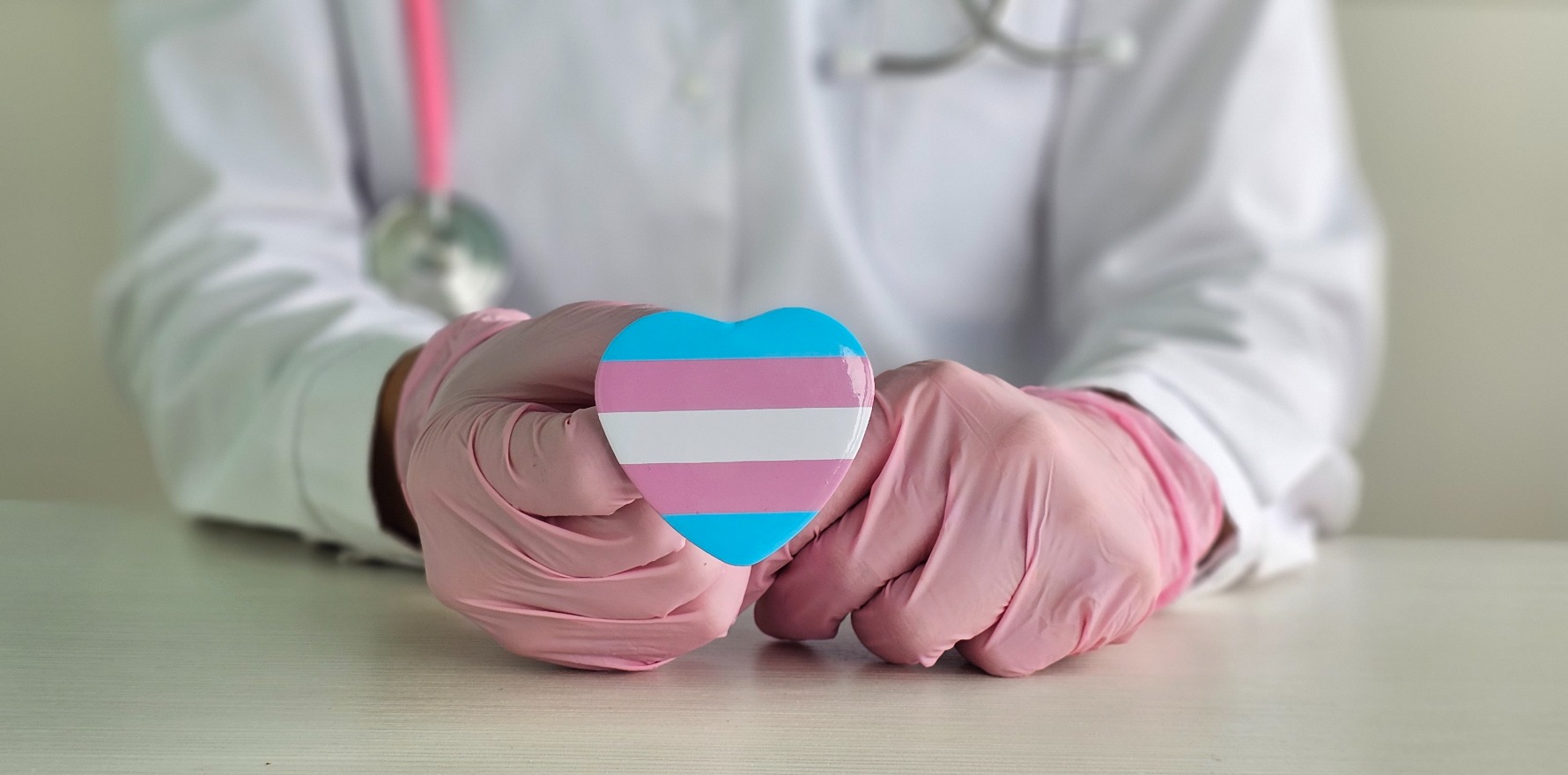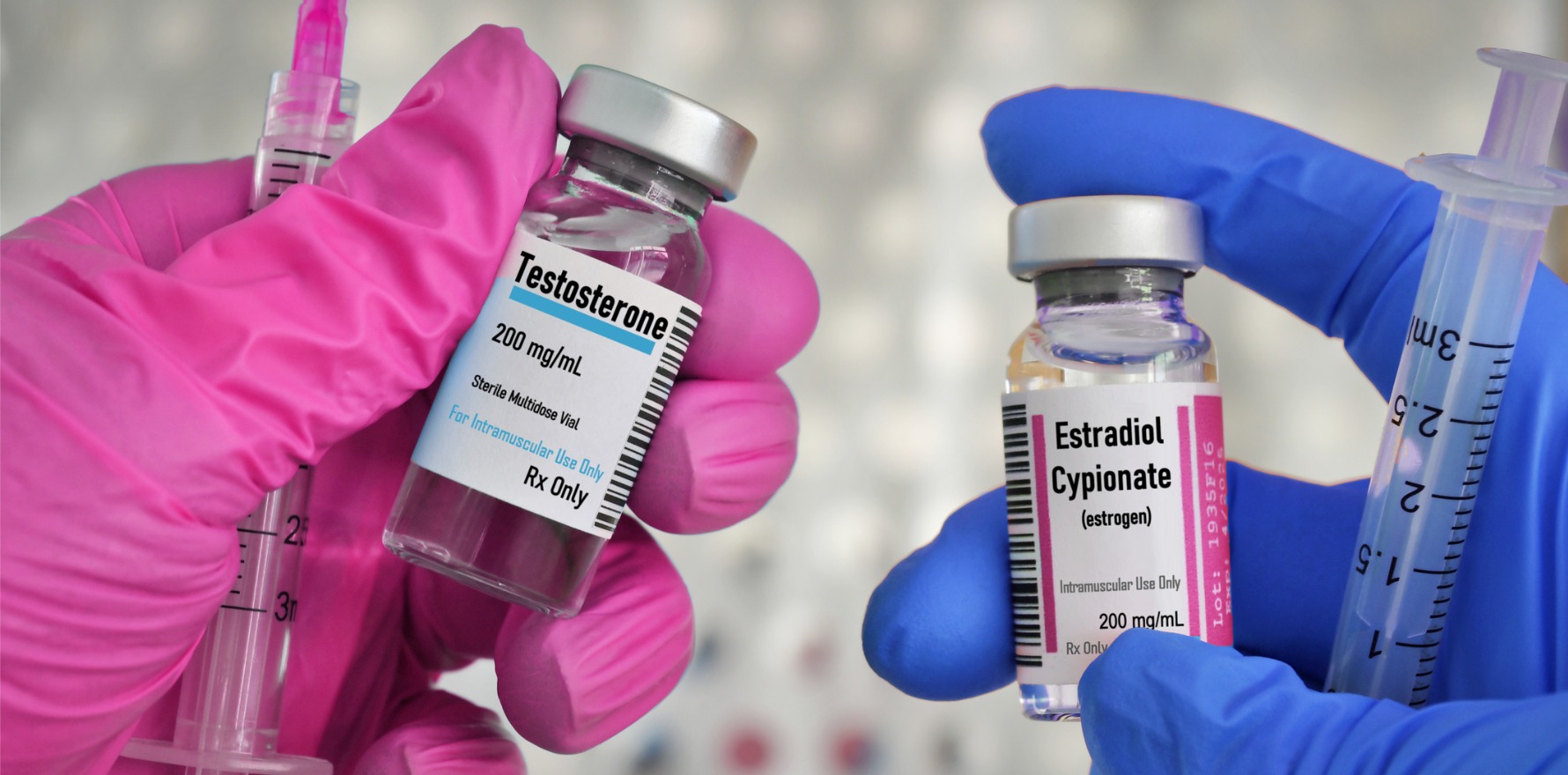A mix of factors is likely responsible for lower seropositivity and higher viral suppression – and there are wider implications for health.
HIV outcomes are substantially better in trans, non-binary and gender-diverse people who receive gender-affirming care, a US cohort study has found, thanks to a combination of factors including quality of life and trust in healthcare.
Published in Lancet HIV, the LEGACY study looked at a total of 8109 trans adults attending two specialised US health centres over the seven years to 2019.
Trans women made up 36% of the sample, 31% were trans men, 18% were non-binary and 13% were another identity; their median age was 29 and just over half were white. A very high proportion were receiving gender-affirming hormones.
Their seropositivity and viral suppression status were recorded each year (participants couldn’t count towards both outcomes in the same year).
Those receiving hormone therapy were 37% less likely to be HIV seropositive than those who weren’t, and were 44% less likely to be virally non-suppressed.
Black and Hispanic trans women had consistently higher seropositivity rates than other groups.
As an accompanying editorial from Lancet HIV says: “Trans people are a key population affected disproportionately by HIV, but they are also one of the most underserved in the HIV response and remain unrecognised in the health data from many countries … In 2022, according to UNAIDS estimates, the relative risk of acquiring HIV was 20 times higher for trans women than for the general population. Among trans people living with HIV, the rate of those receiving antiretroviral therapy is shockingly low, a median of 55%, and adherence and viral suppression can be poor when on treatment.”
Associate Professor Denton Callander, a sexual health researcher with UNSW’s Kirby Institute, currently working in Kenya with Médecins Sans Frontières, said the results were “exactly what I would expect”.
“It’s really great that this excellent team managed to put together such a robust study,” Professor Callander told TMR.
“We’ve suspected this kind of relationship for a long time. In fact, my colleagues and I are working on a similar kind of analysis, but to see it shown empirically in such a clear way is very exciting and important.
“This relationship between HIV risk and gender affirmation was theorised over a decade ago … so we’ve been talking about this for a long time, and communities are telling us: yes, these things are related.”
The paper’s authors hypothesise that gender-affirming hormone therapy is associated with reduced distress and improved quality of life, which may improve health behaviours and reduce risky behaviours, and may also increase trust with health providers.
Professor Callander said that in addition to these factors, the original hypothesis for the link had to do with gender expression.
“The idea was that trans people who are unable to affirm their gender in other ways may seek out these higher-risk behaviours because they find them affirming in some way. So if you can create other pathways to affirmation, you reduce those risks. That’s one part that they don’t talk about so much [in this paper], but I think it’s probably going on.
“And there’s definitely a mental health component. There is so much evidence, including a recent, very robust trial published in the New England Journal of Medicine, that shows gender-affirming hormone therapy in particular – but gender-affirming care full stop – improves mental health outcomes for trans and gender-diverse people.
“Mental health is pretty much related to all other aspects of health … this has been shown for HIV as well.
“The third aspect is that the more engaged you are with your health, the more you trust health systems to do what’s best for you, the more they’re going to work. Delivering gender-affirming care, something trans people frequently say that they want, helps them feel more comfortable, and also helps build trust with health systems and health providers that creates pathways to other kinds of care.
“So it has all these incredible networking effects that will produce better health outcomes – in this case for HIV, but most likely across the board.”
At the AusPath conference last year, Professor Callander presented findings (soon to be published) from a Kirby Institute study that found a 92% reduction in HIV incidence among Australian trans people during a decade that also saw an increase in gender-affirming services.
It’s possible the Lancet HIV study underestimates the benefits of gender-affirming care, which around 85% of participants were receiving.
The small minority who opted out, Professor Callander said, might have made that choice because of side effects, or might be facing other complexities or disadvantage.
But the fact they were attending healthcare settings that were safe for trans people (with policies of using preferred pronouns and names, for example) and where affirming care was available, meant they might already be experiencing some benefits that trans people in the broader community might not.
“I think in a more generalist setting, the disparity would be even greater,” Professor Callander said.
Related
The study’s introduction includes the note: “This manuscript was accepted before Executive Orders were issued by US President Trump related to gender ideology and diversity, equity and inclusion in the USA, which have made some of the materials referenced in this Article inaccessible. The references were available upon acceptance of the manuscript.”
Asked to comment on the effects of the Trump administration’s moves both to deny the existence of a gender spectrum and to shut down US foreign aid work (which could result in 10 million more HIV infections and three million more deaths in the next five years), Professor Callander said he and colleagues had seen and felt them immediately.
“We’re seeing services close, people going without medication, people losing their jobs. And it’s not just here in Kenya. It’s happening in many places around the world, including in the US, where I lived for a long time. It’s an unprecedented thing that will change medical research for a whole generation.
“And let’s not mince words. This is the rise of fascism. Fascists always do the same thing: they find a group to persecute and target. Unfortunately for our trans brothers and sisters and non-binary folks, it’s going to be them, but it will never stop there, and I think all we can do is resist as best we can. Dark times, to say the least.”
But the situation in the US, he said, should not stop results such as these being used in Australia and elsewhere.
“I am excited, because we’re at a unique moment in Australia, where for the first time ever trans people are recognised in our national our federal HIV strategy. So we have this new attention to this group that we haven’t seen in the past.
“For me, taking these results and applying them to Australia makes a lot of sense. It aligns with what our community groups in Australia have been saying for a long time. So I’m hoping that Australia can go a different way than the United States. I believe we can.
“This is all part of the big picture of the health of these populations, and we need to keep investing in it.”





